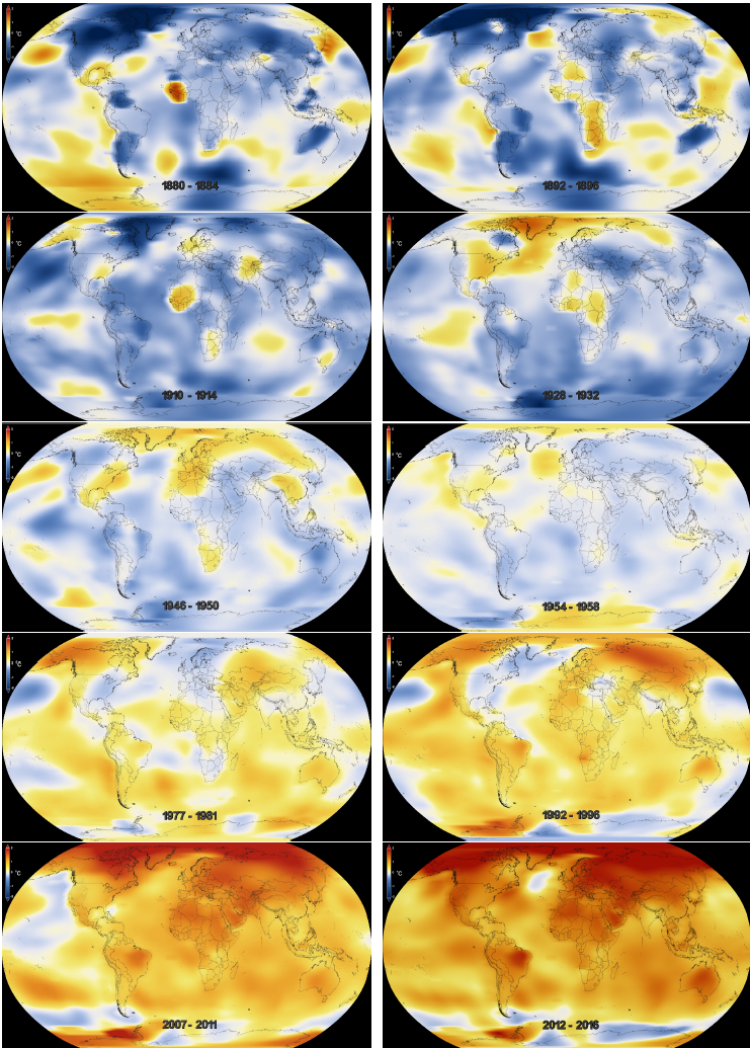Dr. Osita Onyejekwe: Climate Change Study via the Centennial Trend of Climate Factors
This past week, Dr. Osita Onyejekwe had a paper published in Hydrology titled Climate Change Study via the Centennial Trend of Climate Factors. In this paper, Dr. Onyejekwe and his associate, Dr. Nezamoddin N. Kachouie of the Florida Institute of Technology, “utilized a novel approach to non-parametric analysis through the optimization of Signal to Noise Ratio (SNR) to clean up data obtained from NOAA (National Oceanic and Atmospheric Administration).” After cleaning up the data, Dr. Onyejekwe used MATLAB code that he wrote “to analyze and verify global weather pattern behaviors during the periods of 1880 to 2017. Certain climate factors observed included Land Temperature, Sea Surface Temperature, Temperature Over Land Plus Ocean, Carbon Dioxide concentration, and Northern Hemisphere Sea Ice Extent.”

The figure on right shows one of the results of the analysis: “Global heat content between 1880 and 2017. The temperature anomalies are represented within a range from -2 degrees Celsius (dark blue) to +2 degrees Celsius (dark orange).”
When asked what he took away from the project, Dr. Onyejekwe stated that the project “verified the obvious discussion that has been dominating both scientific and political spheres over the recent years pertaining to the validity of global warming claims. That verification being that yes, our earth truly is warming rapidly and in the not too distant future, coastal low lying cities such as Miami, New Orleans and Honolulu will have to take drastic measures to handle not only the increase in ocean levels but increased coastal floodings and extreme weather patterns (especially in the summer months).”
As a result of this paper, Dr. Onyejekwe explained that climatologists will be better equipped to deal “with data denoising and feature extraction with the goal of being able to predict and prepare for drastic weather behaviors that are certain to impact this planet at any moment in time. It also helps scientists understand machine learning algorithms and how to apply them to climate data.”
Now, Dr. Onyejekwe is focusing on Mauna Loa, Hawaii, and the extreme weather patterns that are observed there. With an Aerospace undergraduate, he is working on exploring the climate factors that impact the weather patterns seen in Mauna Loa.
Dr. Onyejekwe said that he “would like to thank NOAA/OAR/ESRL PSD, Boulder, Colorado for the extensive and informative data which made this project a success.”
Congratulations Dr. Onyejekwe; We look forward to seeing more work from you!


